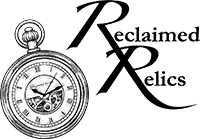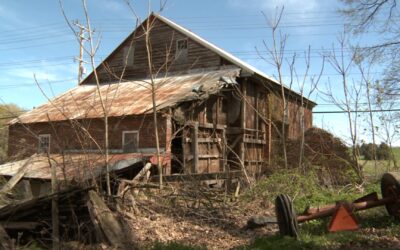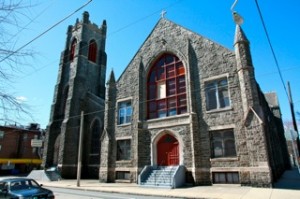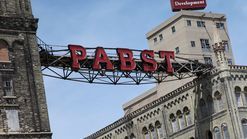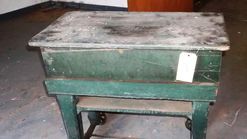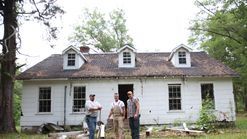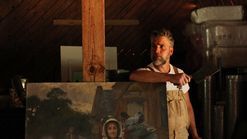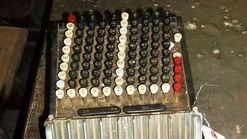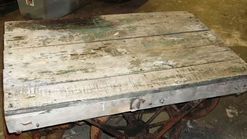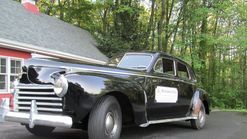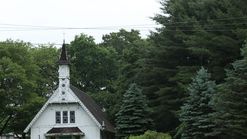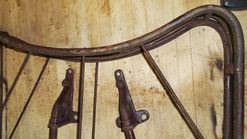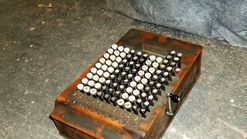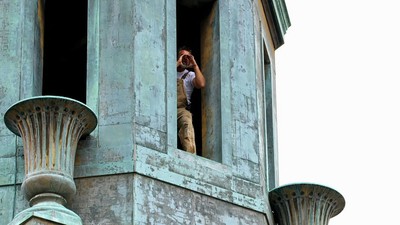
Abandoned follows Jay on some of his most amazing adventures around the country and into some of the oldest abandoned buildings left in America. The shows captures both the history of the locations as well as the treasures inside. After exploring the buildings with rummage buddies, Mark and Danny, he will call Ricki, his wife and business partner, to decide what the best possible purchases are. After negotiating for the best items, Jay will restore one item and reveal it by the episodes end. The history of the buildings, adventure in the travels and larger than life personalities of the cast make “Abandoned” a show you don’t want to miss.
Maryland Grist Mill – S1.E1
Roops Mill is a 26,500 square foot, three building location is located in Westminster, Maryland. Built in 1745, the property sits on 11 acres. The mill was used to process grain, flour, and feed which fed the local community for generations. On the property lies a suspension bridge built ten years prior to the Brooklyn Bridge which used the same mathematical design.
Philadelphia AME Church – S1.E2
The Ruffin Nichols Memorial African Methodist Episcopal Church is located in Philadelphia, Pennsylvania. It was built in 1844 and abandoned in 2010. At 24,000 square feet, it housed three different Episcopalian Parishes. The church reflects the economically prosperous time in which it was built. As the area declined, the congregation shrank, donations dwindled, and the church fell into disrepair. It is scheduled to be demolished.
Pabst Blue Ribbon Factory – S1.E3
Jacob and Charles Best settled in Milwaukee in the late 1830s. They convinced their father, Jacobs Best, Sr., the owner of the Germany’s Best Breweries, to relocate his company to Milwaukee in the 1840s. Business began to decline in the 1860s but no one in the family seemed willing or able to take over the business. Luckily, Frederick Pabst married into the family in 1862 and assumed control of the company. By 1874, Pabst became America’s largest brewery and the name was changed to Pabst Brewing Company in 1889.
Maryland Silk Mill – S1.E4
The Klots Throwing Company Silk Mill is located in Lonaconing, Maryland, an American town and an important source of iron ore and coal mine resources throughout the 19th and 20th centuries. At its height, Lonaconing was once home to two newspapers, an opera house, hotels, banks, a glass factory, a theater, and numerous stores, which today no longer exist. Around 1957, the town’s deep mining which kept its economy thriving ceased, and so the silk mill closed its doors.
Mississippi Homestead – S1.E5
The first settlers of the area were the Chickasaw Tribes, who were one of the earliest inhabitants of present-day Mississippi. Chickasaw dwellings were organized along streams and rivers rather than being clustered in villages. During the infamous “Trail of Tears,” the US government forcibly removed the Chickasaw in the 1830s. Though white settlers had been in the area since the 17th century, many pioneer families came in force to inhabit the territory in the 1830s and 1840s. A few of the Owens family ancestors originally settled the farmland in the 1830s and 1840s.
Georgia Cotton Gin – S1.E6
The Thomas Cotton Gin operated from the mid-1800s to the 1970s. The property also has a peach orchard business, chicken coops and a general store. The property includes the abandoned Thomas farmhouse from the mid-1800s, the Cotton Gin building, barns and even a cottage used by the field hands. All of these locations still contain items and architectural features unique to the Thomas Family Farm, cotton gin and peach orchard operations. The property sits on over 140 acres and contains 8 buildings. Many of the items in the buildings are highly sought-after and increasingly rare collectibles and include paintings of Southern and Civil war scenes, Coca Cola ads and machinery, farm-made furniture and even a custom-build drag racer!
Oil City – S1.E7
The Oil City National Bank building was constructed in 1926. It stands on the same grounds where the Crude Oil Exchange Building stood. Oil City was the home to enormous wealth in the early 20th century. This bank is where the richest people kept their money. John D Rockafeller and Standard Oil set prices for oil for the rest of the world at their headquarters down the street from the bank.
Maine Paper Mill – S1.E8
The Otis Paper Mill dates back to the late 1800s and the space is about 600,000 square feet. In 1906 it became one of the original mills to form the International Paper Company. Many of the workstations and machinery have not been touched since it was abandoned. The development company who owns the mill plans to turn it into a business complex.
New York Masonic Lodge – S1.E9
In the 1850s, the Peck family purchased a plot of land in the rural town of Newtown, Connecticut and built a thriving dairy farm. In 1932, during the throes of the Great Depression, a local auto dealer Daniel Amaral purchased the property and used the barns to store the spillover auto parts from his business.
Connecticut Ghost Town – S1.E10
Johnsonville was originally a company town built to house the workers of the Neptune Mill, which made twine and rope for the fishing industry. The original town included offices for the company, the mill, a library, post office, general store, houses for the works, and a mansion built by the mill owner.
Hot Springs Hotel – S1.E11
Hot Springs, Arkansas is known for its “healing” mineral waters. Bathers come from all over to relax and cure, or at least relieve arthritic pain and other ailments. The Majestic Hotel was built in 1902 and an additional red brick building was later added in 1926. It was frequented by Babe Ruth, the Boston Red Sox, Pittsburgh Pirates, Al Capone, and Bugsy Segal.
Vermont Marble Factory – S1.E12
The Vermont Marble Company facility was home to one of the largest producers of marble in the world. Redfield Proctor, who was a businessman and politician, served as the company’s first president and also founded the Vermont Marble Company in 1880. His political ties helped bring in large contracts for the company.
Scranton Lace Factory – S1.E13
The Scranton Lace Factory was founded in 1897 and operated until 2002. It employed over 1,400 people in its prime. It is made up of several buildings, some of which house a gymnasium, a bowling alley, barber shop, infirmary, a barber as well as having owned its own coal mine and cotton field. It also has a clock tower which became the city’s landmark.
